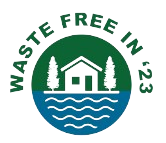Introduction
Waste management is a significant challenge, particularly in low- and middle-income countries where municipalities often lack resources to handle solid waste effectively. Organic waste, including food scraps and faeces, holds little to no financial value, making its collection and treatment unappealing to the informal sector. This study by Lalander et al. (2017) compares four different treatment strategies for managing food waste and faeces in a Swedish context, assessing their economic and environmental impacts.
The Four Treatment Methods
- Thermophilic Composting – A process where organic waste is broken down at high temperatures to produce compost, which can be used as a soil amendment.
- Black Soldier Fly (BSF) Treatment – Larvae of the Black Soldier Fly (Hermetia illucens) consume organic waste, converting it into valuable insect biomass that can be used as animal feed.
- Anaerobic Digestion (AD) – Microorganisms break down organic matter in the absence of oxygen, producing biogas (methane) and digestate, which can be used as fertilizer.
- BSF Treatment Followed by AD (BSF + AD) – A combined approach where BSF larvae first break down the organic waste, and the residue undergoes anaerobic digestion to extract additional energy in the form of biogas.
Key Findings
- Economic Viability: In regions with existing anaerobic digestion infrastructure, the BSF + AD strategy proved to be the most cost-effective, maximizing both protein and energy recovery.
- Standalone Options: If an AD plant is unavailable, BSF treatment alone emerges as the most economically feasible, generating high-value insect protein while reducing waste volume significantly.
- Environmental Impact: AD reduces greenhouse gas emissions by capturing methane for energy use, whereas composting releases more emissions and provides limited economic returns.
- Nutrient Recovery: BSF treatment is highly effective at converting waste into insect biomass, but the residue has lower nutrient value compared to digestate from AD. Combining BSF and AD helps optimize resource recovery.
Environmental and Economic Benefits
- Reducing Greenhouse Gas Emissions – BSF treatment produces significantly fewer emissions than composting. AD further lowers methane emissions by capturing and utilizing biogas.
- Converting Waste into Valuable Products – Insect protein from BSF treatment can replace fishmeal and soybean meal in animal feed, reducing pressure on marine and agricultural resources.
- Energy Generation – AD produces biogas, which can be used for cooking, heating, or electricity generation, contributing to renewable energy sources.
- Sustainable Waste Management – Implementing BSF treatment, especially when combined with AD, encourages waste valorization, making waste management self-sustaining rather than relying on public funds.
Conclusion
This study demonstrates that BSF treatment, especially when integrated with anaerobic digestion, presents an effective and sustainable approach to managing organic waste. In areas with AD infrastructure, the combined BSF + AD strategy is the most beneficial. For locations without AD plants, BSF treatment alone provides an economically attractive alternative. These strategies not only improve waste management but also support the circular economy by producing valuable animal feed, biofertilizer, and renewable energy.
Got questions?
